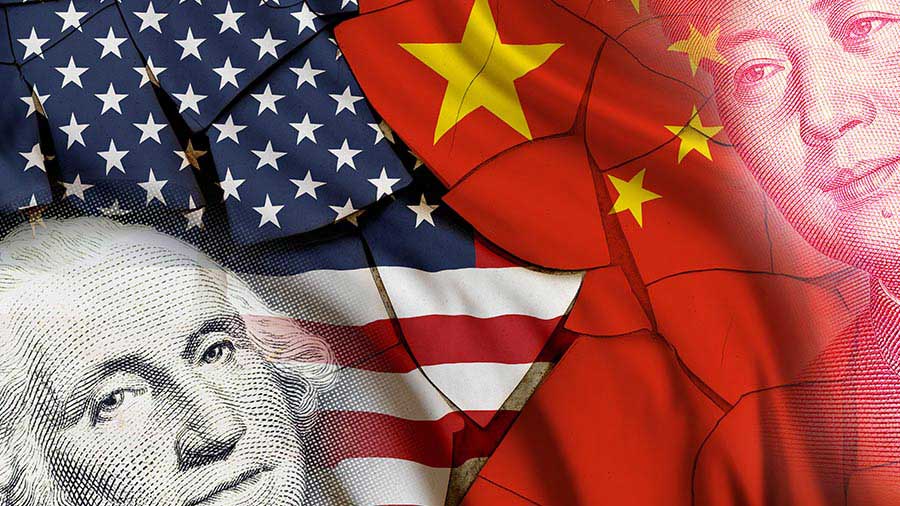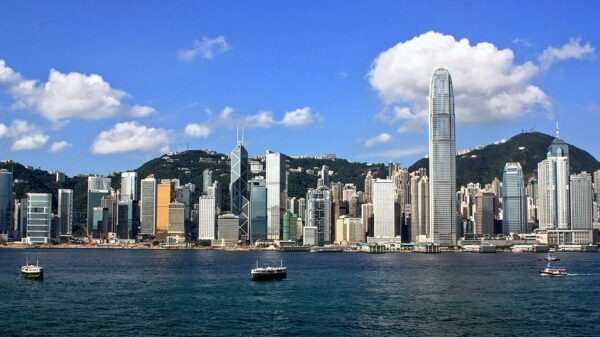The U.S.-China trade war has entered a new chapter with the implementation of an eye-popping 104% tariff on Chinese imports. This latest escalation in trade policies, spearheaded by the Trump administration, is already sending shockwaves across global markets, leaving economists, CEOs, and investors grappling with its implications.
The Breakdown of the Tariff
The 104% tariff on Chinese goods is a culmination of several layers of duties:
- A 20% base duty imposed earlier.
- An additional 34% tariff introduced mid-2024.
- A last-minute 50% increase signed into effect on Tuesday by President Trump.
This dramatic increase has made it significantly more expensive for U.S. companies to import products from China, a move that Treasury Secretary Scott Bessent defends as necessary. However, early signs suggest that this policy may have far-reaching consequences.
Market Reactions
The tariff announcement triggered a turbulent day on Wall Street:
- The Dow Jones Industrial Average fell 0.84%.
- The S&P 500 declined 1.57%.
- The Nasdaq Composite experienced the sharpest drop, losing 2.15%.
China’s stock markets also felt the sting, with Japan’s Nikkei 225 plummeting 4% and South Korea’s Kospi entering bear market territory with a 1.8% drop.
Elon Musk vs. Peter Navarro
Amid the chaos, Tesla CEO Elon Musk has emerged as a vocal critic of the administration’s trade advisor Peter Navarro. Musk called Navarro “a moron” and “dangerously dumb” in response to comments that Tesla was more of a “car assembler” than a manufacturer. The feud highlights growing divisions even within Trump’s inner circle, as Musk holds a prominent advisory position in the administration.
Tesla’s stock has suffered alongside others, falling 22% over the past four trading sessions. This slump reflects broader concerns about the company’s reliance on Chinese manufacturing and raw materials.
China’s Response and Economic Impact
Unsurprisingly, China has not taken the tariffs lightly. A spokesperson for China’s Foreign Ministry, Lin Jian, stated that “pressuring or threatening China is not the right way to engage with us.” Lin also emphasized that the U.S.’s actions indicate a lack of seriousness about negotiations.
The tariffs are already weighing heavily on China’s economy. Citi has revised its growth forecast for China in 2025, lowering it from 4.7% to 4.2%. Analysts expect further downgrades as the full impact of the tariffs begins to materialize.
Ripple Effects Across the Globe
The tariff hike is not limited to China. The Trump administration has imposed duties ranging from 11% to 84% on imports from 86 countries. Notably, Lesotho faces a 50% tariff on its exports to the U.S., the second-highest rate after China. India is also feeling the pinch, with a 26% tariff affecting its trade. In response, the Reserve Bank of India cut its policy rate by 25 basis points to 6%, its lowest level since September 2022.
The Bigger Picture
For now, there is no clear path to resolving the U.S.-China trade war. Despite claims from Treasury Secretary Bessent that 70 countries have reached out to discuss trade deals, no significant agreements have been finalized. Meanwhile, global businesses are left navigating higher costs, disrupted supply chains, and market uncertainty.











